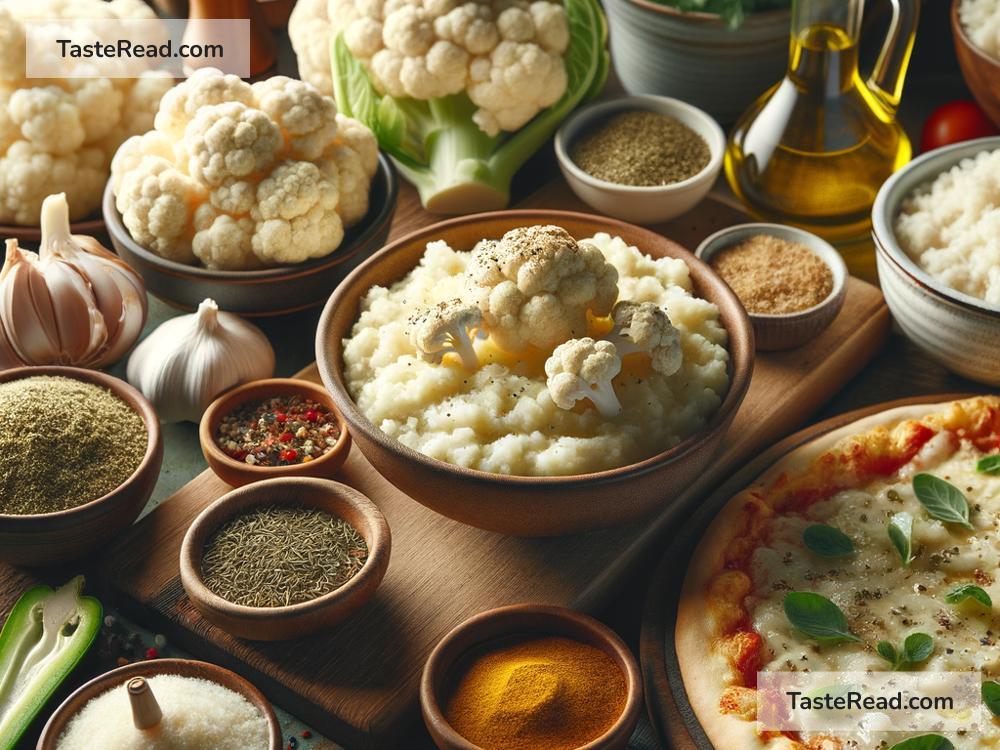Why Cauliflower Is So Versatile in Cooking
Cauliflower might just be one of the most underrated vegetables out there. It’s not as crunchy as carrots, not leafy like spinach, or as sweet as corn, yet it has become an absolute favorite for cooks around the world. Whether you’re boiling it, baking it, blending it into a soup, or even turning it into pizza crust, cauliflower takes on many flavors and textures. So, what makes this humble vegetable so versatile? Let’s break it down.
A Blank Canvas for Flavors
One of the biggest reasons cauliflower is so adaptable in cooking is its mild taste. Unlike strong-flavored vegetables like broccoli or kale, cauliflower doesn’t overpower other ingredients. Instead, it absorbs flavors wonderfully, making it a “blank canvas” for spices, sauces, and seasonings. You can make it spicy with chili powder, creamy with cheese, or tangy with lemon—cauliflower compliments them all.
For those who love experimenting in the kitchen, cauliflower is the ultimate playground. You can pair it with bold spices like turmeric and cumin to create Indian-style dishes, toss it with garlic and olive oil for a simple side, or mix it into marinara sauce for a hearty Italian meal.
Different Forms, Different Uses
Another reason cauliflower shines is because it can take on so many forms. Unlike traditional vegetables that are cooked and served in their original shape, cauliflower can be transformed into entirely new ingredients. For example:
-
Cauliflower Rice: Grated cauliflower becomes tiny pieces resembling rice, which is fantastic for people wanting a low-carb alternative to grains. It absorbs sauces wonderfully in stir-fry dishes and has a soft yet slightly chewy texture.
-
Cauliflower Pizza Crust: When crushed and mixed with cheese or egg, cauliflower can be shaped into a pizza crust. This is perfect for those avoiding gluten or carbs but still craving pizza.
-
Cauliflower Mashed “Potatoes”: Blend steamed cauliflower with a little butter and seasoning, and you have a creamy dish that’s just as comforting as traditional mashed potatoes—minus the heaviness.
-
Cauliflower Steak: Thick slices of cauliflower can be grilled or roasted, giving it the hearty feel of a steak without the meat. It’s a satisfying vegetarian option for barbecues or formal dinners.
These transformations make cauliflower an easy choice for people on different diets, including low-carb, vegan, paleo, or gluten-free lifestyles.
A Nutritional Powerhouse
Aside from being versatile in texture and taste, cauliflower is also packed with nutrients. It’s low in calories, so it’s great for those watching their weight, but it’s still full of vitamins and minerals like Vitamin C, Vitamin K, and folate. It’s also a great source of fiber, which helps digestion, and antioxidants that can fight off cell damage in the body.
Because cauliflower is so healthy, it’s become a go-to pick for people looking to include more nutritious options in their meals. Turning it into rice, pizza crust, or mashed potatoes makes healthier eating easier and tastier.
Easy to Cook and Prepare
Another point in cauliflower’s favor is how easy it is to prepare. Unlike some vegetables that require peeling, chopping, or extra prep time, cauliflower is pretty straightforward. All you have to do is remove the green leaves and break the head into small florets. Plus, it cooks quickly whether you’re boiling it, roasting it, or tossing it into a stir-fry.
For busy families, cauliflower can be a lifesaver on weeknights when quick and easy meals are needed. Frozen cauliflower is also widely available in grocery stores, meaning you can have it on hand anytime without worrying about it spoiling.
A Staple in Global Cuisines
Cauliflower has long been a popular ingredient in many cuisines around the world. In Indian food, cauliflower is the star of dishes like aloo gobi (potatoes and cauliflower with spices) and cauliflower curry. In Chinese cooking, it’s often stir-fried or added to fried rice. In American kitchens, it’s roasted with cheese or mashed like potatoes.
Because cauliflower works well in so many cooking styles, it allows people to try dishes inspired by different cultures. Whether you want spicy Asian flavors or rich, creamy European sauces, cauliflower fits right in.
A Friend to Food Restrictions
Thanks to its adaptability, cauliflower is loved by people with food restrictions or dietary goals. Those avoiding gluten can use cauliflower in place of flour for recipes like pizza crust or tortillas. People cutting carbs enjoy cauliflower rice or mashed cauliflower instead of potatoes and rice.
Even those who dislike traditional vegetables often get won over by cauliflower recipes because it doesn’t “taste like a vegetable” when cooked into creative dishes. This makes it a fantastic option for picky eaters or kids.
Conclusion
Cauliflower is much more than just a simple vegetable—it’s a powerhouse of versatility, nutrition, and flavor. Its ability to take on different forms, absorb spices, and fit into global cuisines has turned it into a must-have ingredient in many kitchens. Whether you’re looking for a healthy alternative, experimenting with creative recipes, or simply trying something new, cauliflower has something to offer.
So, the next time you’re planning your meals, consider grabbing a head of cauliflower. You might be surprised just how many ways it can make your cooking exciting and delicious.


